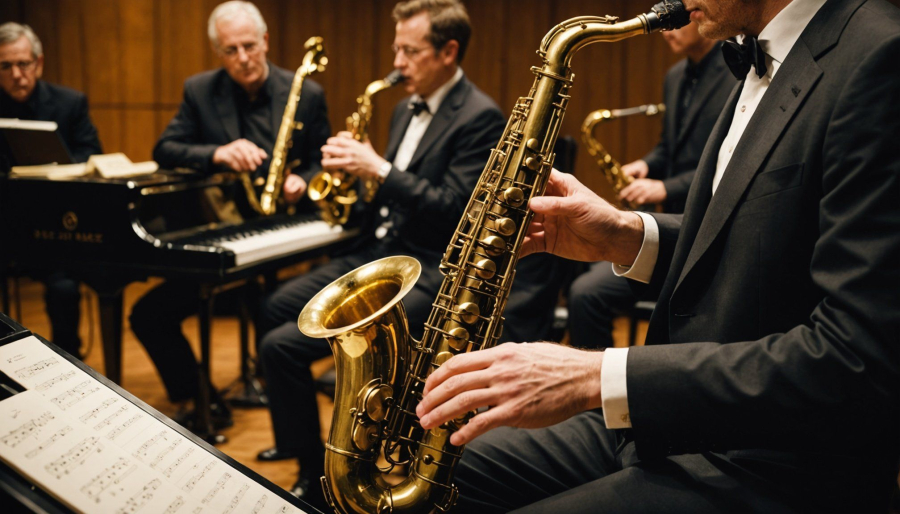Jazz’s energy and expressive freedom attract music lovers and curious learners alike. From distinctive rhythms and improvisation to the unique voices of saxophones and trumpets, understanding jazz basics opens doors to creative exploration. Whether you’re listening for enjoyment or picking up an instrument, mastering jazz fundamentals helps you appreciate its rich legacy—and maybe even inspires you to join in. Here’s a straightforward start for your jazz journey.
Essential foundations for understanding jazz music
From its roots in African American communities of New Orleans, jazz has evolved through numerous phases—ragtime, swing, bebop, and beyond. Today, its expressive freedom and rhythmic complexity continue to attract learners and listeners alike. Resources such as jazz for beginners highlight how the genre’s legacy is built upon a few unmistakable pillars: unique structures, evolving historical context, and a collective spirit.
Central to jazz are the concepts of improvisation, swing rhythm, and syncopation. Improvisation gives musicians room to invent melodies in real time, requiring both technical skill and a deep sense of musical dialogue. Swing, characterized by its uneven subdivisions of the beat, delivers the genre’s irresistible groove, contrasting with the straight feel found in classical or pop. Syncopation weaves unexpected accents into melodies, heightening rhythmic interest.
Distinct jazz styles—such as cool jazz or Latin jazz—bring their own instrumental colors, harmony choices, and tempos. Recognizing these features is fundamental to grasping what makes jazz so distinctive and enduring.

Instruments, roles, and the structure of jazz ensembles
Jazz instrumentation overview centers on five essential instruments: piano, saxophone, trumpet, bass, and drums. Each brings a distinct voice, shaping the overall sound. The jazz ensemble roles are clear; the piano and guitar handle chords, establishing harmony and supporting soloists. The saxophone and trumpet usually lead with main melodies and improvised solos.
The bass, both in upright and electric forms, is the backbone of rhythm, outlining harmonic progressions and connecting the rhythm section to the horns. Drums manage time and energy, introducing beginner jazz rhythm patterns such as the classic swing ride or simple syncopation to drive the group forward.
Common group structures include trios, quartets, and quintets. In each, the rhythm section (piano, bass, drums) forms a tight foundation, while melodic instruments interact with improvisation and call-and-response. In summary, understanding the jazz instrumentation overview, jazz ensemble roles, and beginner jazz rhythm patterns equips you to recognize each part’s purpose—essential for listening, learning, and playing jazz.
Basic jazz theory and elements for beginners
Jazz chords and progressions lay the foundation for all jazz music. Precision in these elements means understanding how a progression moves from one chord to another. In practice, jazz chords and progressions usually revolve around major, minor, and seventh chords, with seventh chords being particularly prominent.
Understanding jazz scales is crucial for improvisation and soloing. Jazz uses several scale types, with the major scale, minor scale, and blues scale being essential. Practicing understanding jazz scales repeatedly helps develop both ear and theory skills. Beginners should focus on connecting these scales to the chords heard in jazz chords and progressions.
Accessible exercises, like beginner jazz piano exercises and beginner jazz guitar chords, are available in many beginner jazz theory books. These resources usually start with simple voicings and rhythms. For example, sticking to root position chords and easy walking bass patterns helps reinforce understanding jazz scales within real musical situations.
Regular practice with these elements builds confidence and prepares newcomers for more advanced concepts.
Getting started: first steps to learning and playing jazz
Learning jazz standards should begin with pieces known for their accessible melodies and clear harmonic structure. Start with some of the easiest jazz songs for beginners, such as “Autumn Leaves” or “Blue Monk.” These provide straightforward formats suitable for understanding song structure and practicing essential skills.
Jazz improvisation for beginners is most effective when you gradually build skills. Begin by playing simple melodies and experimenting with adding your own notes while maintaining the tune’s rhythm. Focus on using a limited set of notes—like the blues scale—when experimenting with improvisation, which helps reinforce foundational theory.
Reliable beginner jazz theory online resources can help you learn important basic concepts. Look for interactive tools or platforms such as reputable jazz learning websites. Supplement your self-guided study by practicing jazz with metronome regularly; this develops your sense of time and swing—critical for any jazz setting.
Balance structured exercises with free experimentation to keep the learning process both productive and enjoyable.
Practice Strategies and Tips for Ongoing Jazz Development
Best jazz practice routines revolve around structure and consistency. Start with a focused warm-up, then allocate time for scales, arpeggios, and short improvisations. Integrate technique work directly into your effective jazz practice schedule by planning short, achievable goals for each session.
Developing swing feel remains fundamental. Use precise time with a metronome set at half-tempo to exaggerate the off-beat. Tap, vocalize, and subdivide rhythms aloud while playing to internalize swing’s pulse and subtle timing shifts. Repetition is key.
For jazz ear training exercises, practice transcribing short phrases by ear and singing intervals, focusing on guide tones within familiar standards. Challenge yourself with call-and-response—listen to a phrase, then reproduce it vocally and instrumentally. Include different styles and tempos in your ear training for thorough exposure.
Regular review and adaptation of your best jazz practice routines ensure progress. Mix structured exercises, active listening, and creative play in each effective jazz practice schedule to maintain motivation and musical growth.
